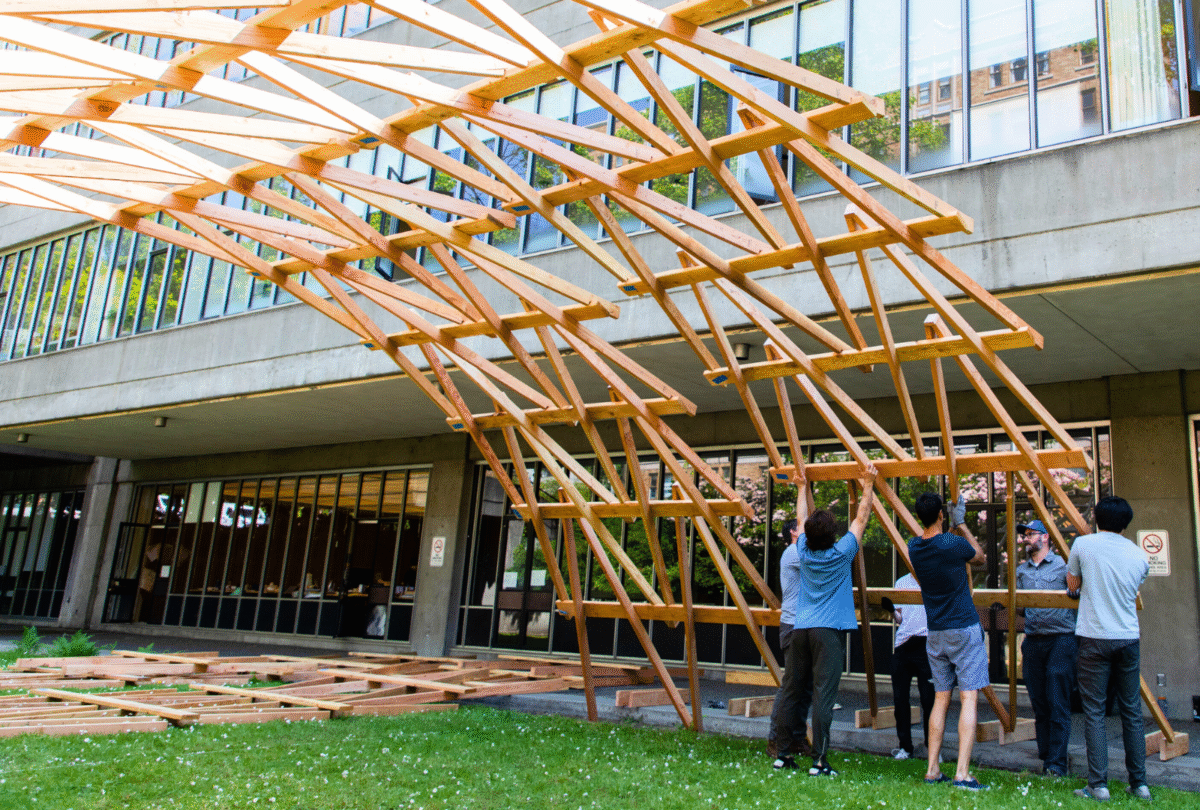Posted on July 7, 2025
Post categories: Architecture

Wood is one of the oldest materials in architecture—but today, it’s also among the most innovative. At the College of Built Environments Barry Onouye Endowed Studio, students are not just studying timber—they’re shaping its future.
Through a unique collaboration with Leif Johnson and Marne Zahner of StructureCraft, students spent ten weeks exploring wood’s structural capacity and expressive potential. The result? A reciprocal timber vault, made of interlocking ‘W’ shaped modules. Inspired by a Leonardo daVinci design, the vault was self-supporting at all stages of construction with no need for scaffolding or falsework. Fabricated with an eye toward material reuse, connections became a combination of notches and fasteners to minimize waste and maximize future potential.
For many students, the project marked the first time they physically constructed a large-scale structure from start to finish. For others, it was a chance to work with wood as a local, sustainable material with global relevance.
Supported by the Sustainable Forestry Initiative (SFI) and the Washington SFI Implementation Committee (WASIC), the class used regionally sourced lumber donated by Sierra Pacific Industries, Hampton Lumber and Yakama Forest Products. The project demonstrated the tangible benefits of working forests and the potential of sustainably harvested timber to reduce construction’s carbon footprint.
The resulting domes—playful yet resilient—will be on display at the 2025 Seattle Design Festival. In a city with a long tradition of building with wood, these student-designed timber shells represent a return to local materials and a vision for a greener architectural future.
Learn more about studying architecture at the College of Built Environments.